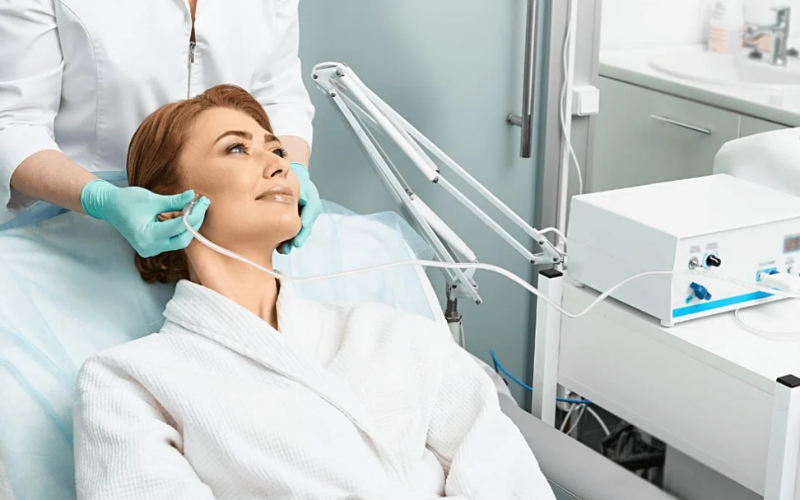Ozone gas, a molecule made of three oxygen atoms, is used in dentistry as a potent oxidizing agent in ozone therapy to treat a variety of oral health conditions. By efficiently getting rid of germs, viruses, and fungi, this naturally occurring gas helps the mouth recover from cavities and become less inflamed. Ozone is produced from medical-grade oxygen in dental applications with the use of special equipment, guaranteeing accurate and secure dosages.
Historical Background
Medical professionals have utilized ozone since the late 1800s to treat illnesses and purify drinking water. By the 1930s, German dentists were already using ozone gas to treat gum disease and cavities. Over time, as its use spread throughout the world, it gradually became a mainstay of holistic dentistry techniques.
Dental Care Applications of This Therapy
Numerous dental procedures incorporate ozone therapy, such as:
- By focusing on and removing dangerous germs below the gum line, ozone promotes tissue repair and lowers inflammation.
- It can stop decay in its tracks and promote natural remineralization of the tooth structure by disinfecting decayed areas.
- Using ozone after surgery helps hasten the healing process and reduces the chance of infection.
- By closing open dentinal tubules, it helps reduce discomfort caused by tooth sensitivity.
- To maintain a sterile environment and stop biofilm growth, dental units may use ozonated water.
Clear Advantages of Ozone Treatment
The following are some benefits of using ozone therapy in dental care:
- Antimicrobial Effectiveness: Ozone efficiently removes a wide range of pathogens, such as bacteria, viruses, and fungi, contributing to a cleaner oral environment.
- Minimally Invasive: By treating decay non-invasively and protecting more of the natural tooth structure, ozone therapy in Sugar Land can lessen or even completely replace the need for drilling.
- Enhanced Healing: Ozone speeds up the healing process after dental operations by promoting blood flow and tissue regeneration, minimizing the risk of post-procedure infections.
- Decreased Tooth Sensitivity: By lowering inflammation and sealing exposed dentin, ozone treatment can lessen tooth sensitivity, providing long-lasting relief and better oral comfort.
- Support Well-being: Eliminating oral infections may help reduce systemic inflammation, which may improve overall health.
Science Behind Its Effective Outcome
Ozone’s effectiveness stems from its ability to disrupt microbial cell membranes through oxidation; consequently, this leads to the destruction of pathogens responsible for oral diseases. Moreover, ozone therapy stimulates the immune system, enhances oxygen delivery to tissues, and promotes the activation of antioxidant enzymes. As a result, these combined actions significantly contribute to its overall therapeutic effects.
Medical Explanation
By lowering dangerous germs, ozone therapy in dentistry not only improves oral health but also helps reduce systemic inflammation, which is often associated with diseases like diabetes and heart disease. Furthermore, it supports a healthier gut microbiota and enhances immunological function. In addition, ozone therapy encourages better oxygenation of tissues for quicker healing and, consequently, lessens the need for antibiotics.
Safety Considerations
Trained professionals perform ozone therapy safely and effectively by handling it properly and applying it precisely to avoid irritating surrounding tissues.
A Gentle, Effective, and Holistic Dental Approach
Overall, this therapy represents a gentle and effective approach to dental care, offering antimicrobial action, promoting healing, and supporting overall oral health. Its integration into dental practices underscores a commitment to minimally invasive and holistic treatment modalities. To receive one, contact our dentist today!

